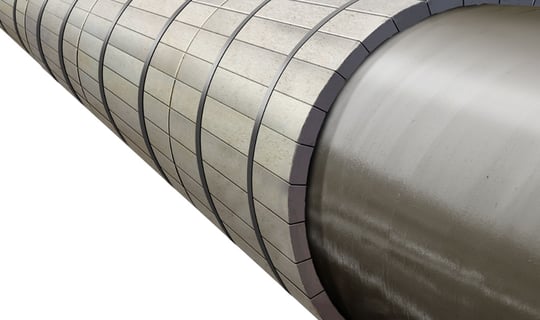
The Tenth Circuit U.S. Circuit Court of Appeals has revived a 2019 antitrust lawsuit against Berkshire Hathaway’s Johns Manville (JM) by rival calcium silicate producer, Chase Manufacturing, also known as Thermal Pipe Shields (TPS). The court determined that, in light of the evidence, TPS raised a triable issue of fact and the district judge erred in granting summary judgment for JM (Chase Manufacturing Inc. v. Johns Manville Corp., 10th Cir., No. 22-1164).
At issue is whether Johns Manville, a unit of billionaire Warren Buffett’s Berkshire Hathaway, unlawfully maintained its monopoly in the market for calcium silicate, a substance used in thermal pipe insulation. Johns Manville had been the sole domestic manufacturer and supplier of calcium silicate for decades, facing no competition in selling its product to thermal pipe insulation distributors, according to the complaint. That changed in 2018 when TPS entered the market with a superior and less expensive product imported from China.
 Calcium silicate is used as a safe alternative to asbestos for high-temperature insulation materials. It’s often used in industrial piping and equipment insulation. It can also be found in consumer products like salt and antacids.
Calcium silicate is used as a safe alternative to asbestos for high-temperature insulation materials. It’s often used in industrial piping and equipment insulation. It can also be found in consumer products like salt and antacids.
TPS accused Johns Manville of threatening to stop doing business with distributors if they bought TPS’ calcium silicate. These alleged threats enabled Johns Manville to retain more than 97% of the market, according to TPS.
The Court of Appeals wrote of sufficient evidence that JM used its monopoly power to coerce distributors into not buying TPS’s competing product. The court also noted that Johns Manville achieved much higher gross margins on calcium silicate than its other products in more competitive markets, further indicating competition was suppressed in the calcium silicate market.
The Court of Appeals also cited an email sent when TPS first entered the market, in which Johns Manville told sales staff they might need to “bring the sword” and warn distributors that their relationship might change “significantly” if they bought TPS’ product. The suit alleges JM took this action because it recognized the threat TPS’s superior and less expensive product posed to JM’s monopoly.
“Viewing the evidence most favorably to TPS, we see JM as leaving its distributors with an all-or-nothing choice: stop doing business with TPS or lose access to JM’s enormous thermal-insulation inventory,” the Court of Appeals wrote. The court remained the case back to the district court for further proceedings.
Commentary
Courts too often become fixated on whether conduct falls into a recognized category of anticompetitive behavior, like unlawful boycotts, tying, or bundling.
If it does, then the claim continues; if it does not, then the claim is dismissed. But anticompetitive conduct comes in too many forms to provide a comprehensive catalog. Moreover, if conduct must fall within an existing theory to violate antitrust law, then all new forms of exclusionary conduct would be exempt from enforcement. Therefore, monopolization claims should be analyzed on a case-by-case basis to determine whether the monopolist is engaging in exclusionary conduct without a rational business purpose.
This is what the Tenth Circuit did here. According to the allegations, JM used threats and its substantial market power to prevent distributors from purchasing the plaintiff’s calcium silicate. As a result, the plaintiff was foreclosed from a substantial share of the market and could not grow its market share despite offering a superior and cheaper product. Although these allegations do not fit within an established category of anticompetitive behavior, they demonstrate that JM is maintaining its monopoly through exclusionary conduct without business justification apart from anticompetitive goals. As the Tenth Circuit correctly recognized, this raises a question of fact sufficient to defeat summary judgment concerning whether JM is unlawfully maintaining its monopoly in violation of Section 2 of the Sherman Act.
![]()
Edited by Tom Hagy for MoginRubin LLP. Top photo by Robert Zunikoff on Unsplash. Second photo from Johns Manville website.







